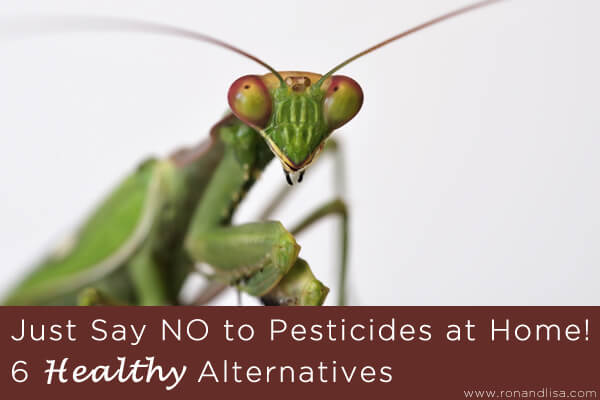Is a bug’s death costing you your life? This may sound a bit extreme at first, but not when you dig deeper and discover the dangerous, toxic chemicals found in synthetic pesticides. Pesticides give off noxious gases that harm humans as well as insects. Children are especially vulnerable because their immune systems are still developing. They are more likely to come in contact with pesticides because they spend more time playing outdoors on the grass, where pesticides are commonly applied, and indoors on carpeting, where lawn chemicals may have been tracked in and deposited. Children are also more likely to transfer toxins from hand to mouth.
Flea collars are a serious source of pesticide exposure for children who love to roll around with the family pet. By putting a flea collar on your favorite pet, you’re not only bringing noxious gases into your home; you’re doing the pet no favor! Pesticides are designed to kill living organisms, and they don’t discriminate between pests and pets.
Instead of using toxic pesticides, try Integrated Pest Management (IPM). IPM is an effective, environmentally sensitive and graduated approach that relies on a combination of economical and common sense practices to manage pests with the least possible hazard to people, property and the environment. IPM gets you to think strategically about eliminating pests. To develop an IPM strategy, consider these key questions:
- Where are the pests coming in?
- Why are they staying?
- What are their food sources?
Related Articles:
Bugs vs. Pests: Understanding the Crucial Difference
5 Reasons We Love Terminix AllClear Mosquito Bait & Kill
GOT BUGS? Ron & Lisa Show You How to Tackle ‘Em, Toxin-Free!
Bugs Begone! 7 Non-Toxic Ant Control Recipes
Ants Away – Indoors & Out
Once you know the answers to these questions you can do any repair work necessary to keep out the pests, such as fixing screens or filling cracks with a non-toxic caulk. Next, you can address any moisture problems or other issues that have transformed your home into a luxurious five-star hotel for the pests. Finally, you can work on taking away their food source. This can be as simple as cleaning up your pantry shelves and storing dried foods in sealed glass jars. For some pests, like cockroaches, you may need to do some home maintenance such as repairing damaged wallpaper so the roaches can’t snack on the glue.
For many pest problems, simply asking and addressing these issues will take care of the problem. For others, you’ll need to go further, which may involve less-toxic pesticides like boric acid or diatomaceous earth (DE). An IPM approach only uses pesticides that are produced from natural sources, as opposed to synthetic chemicals.
|




Another fool proof and safe way to keep out ants is Bay Leaves!! Just put the bay leaves around where the ants are coming in and where they are already and as long as you leave the bay leaves out, the ants won’t come in. It really does work!!
Thanks Mary! I recently heard this tip as well from my mother who lives in Hawaii (and swears by the bay leaves trick). I guess a good way to remember is: To keep ants a bay…use Bay 🙂